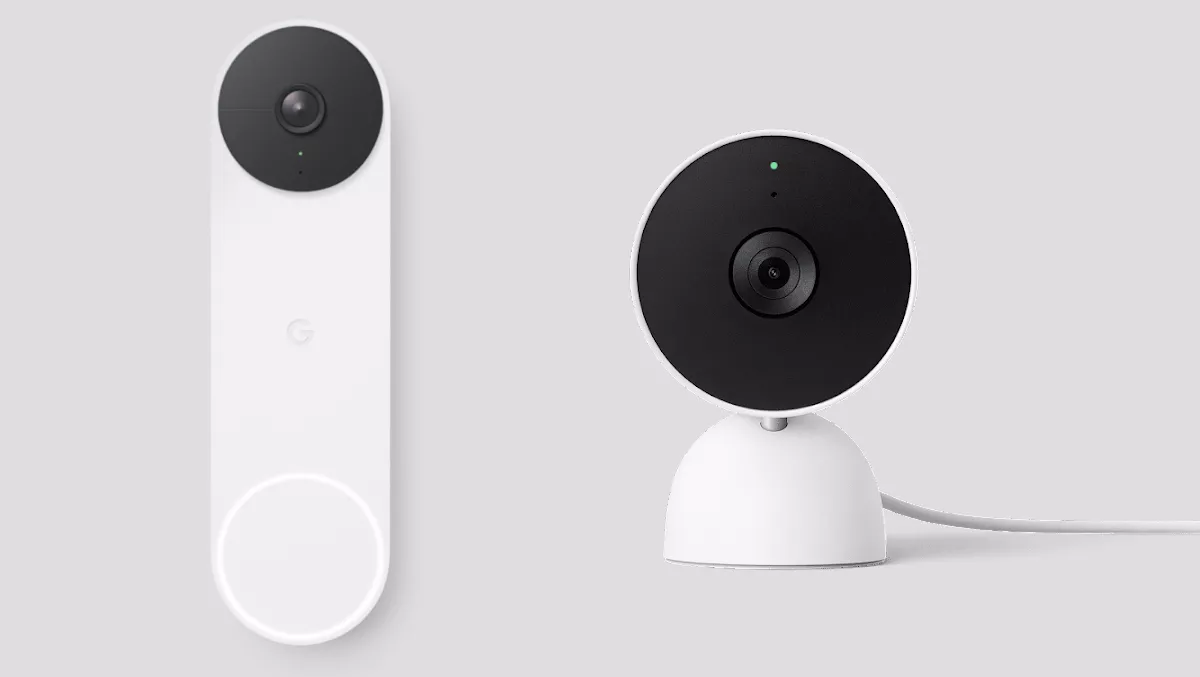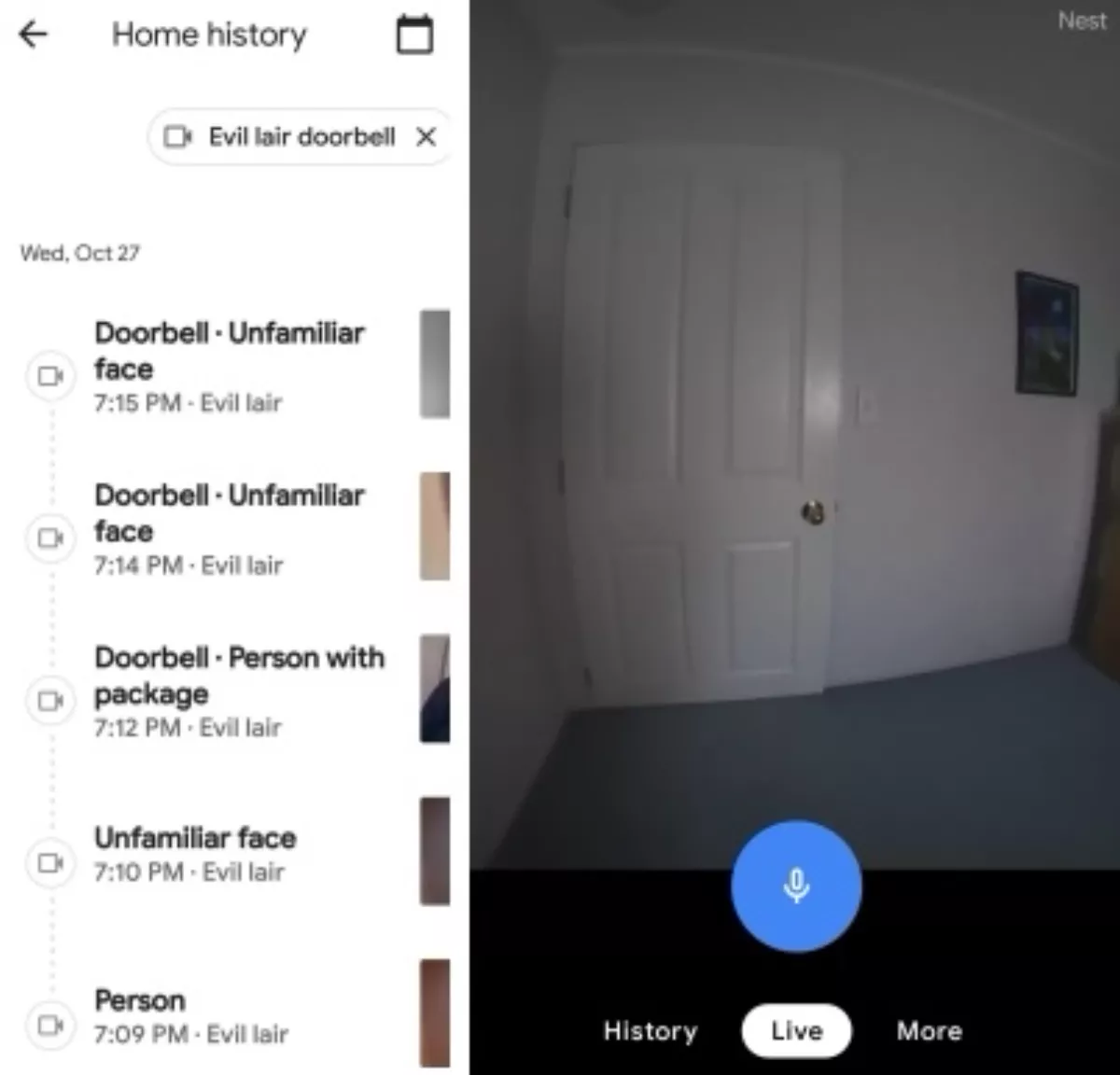
Hands-on review: The Google Nest Cam (2nd gen) and Nest Doorbell
When Google bought smart home device maker Nest in 2014, there was a US$3.2 billion price tag - and indeed, it has been a smart move that paid dividends. The two founders of Nest, Tony Fadell and Matt Rogers were old-hat Apple engineers in a previous life. I sometimes wonder if Apple feels a little jealous.
Anyway, back to the point. Since 2014, Google has been churning out Nest products left, right and centre - thermostats, home security systems, carbon dioxide detectors, you name it. Here, we take a look at the Nest Doorbell and the 2nd generation indoor wired Nest Cam.
Google 2nd Gen indoor wired Nest Cam
Skipping through some of the stats, the camera records up to HD video (1080p at 30 frames per second), a wide 135-degree diagonal field of view, night vision and two infrared LEDs, and a three-metre power cable. I'll admit, I'm easily impressed when it comes to the quality of security cameras these days, as admittedly, I only have an older Arlo 2 system I bought off Trade Me.
Design-wise, the Nest Cam is unremarkable though weighty – two things you want in any security camera. Plug it into a power point, turn on Google Home on your phone or tablet, follow the setup prompts, answer a few questions, connect to a network, and voila. You now have video streams in-home video to your phone, with a delay of about one second.
A green light on the camera is illuminated when the camera is active, and the light blinks when someone is watching the live stream through Google Home.
I note with some interest that Google's installation setup casually mentions in passing that you need to make sure your visitors know they're being recorded – oh. Google won't use video footage for nefarious means.
Within the Google Home App, the capabilities you have at your disposal are straightforward. You can view live video and audio, speak through the in-camera microphone, get notifications when the camera triggers movement (you can sort via people/animals/vehicles/motion). There are a few more options here, and I recommend looking into them, so you're not plagued with useless notifications.
Below you will see various captures of my feline companion begging for his dinner. The left side shows various lights on configurations (no infrared and infrared) while the right side shows and lights off (infrared).

Google offers a 30-day trial of Nest Aware, which saves video history and enables you to set up intelligent alerts. I also read that compatible speakers and displays can even alert users when they detect sounds like smoke alarms and glass breaking, which is pretty neat.
Home away routines mean the camera can turn on when you leave your house and turn off when you arrive home, using a couple of methods like phone locations to detect when you're home. Again, a handy feature to have, especially when you don't want to be bombarded with notifications when you walk in the door.
You also have the option to view video footage in-app. It's not immediately obvious how to download clips to my device storage, but the internet came to the rescue and told me I need to go into a specific video clip, tap 'event details' and then click the download icon near the top. It was an easy learning curve.
Google Nest Doorbell
The doorbell features 960x1280 HD video at up to 30 frames per second and a 145 diagonal field of view. It includes infrared LEDs that can see up to 3 metres and a speaker and mic. Unfortunately, while it's water-resistant, it's not waterproof. Hopefully, any eaves on your house will offer some weather protection.
Helpfully, a white LED illuminates the doorbell button when a hand draws near, and it will be apparent to every visitor that they're on camera.
The box includes the doorbell, a baseplate, a tilt bracket, and some installation tools, and Google shows installation videos via either a power drill or a trusty Philips screwdriver. Google is full of tips, so follow the guides closely.
When you set it up, you specify whether this will be a wired or battery doorbell. Note: If it's wired to an old doorbell's wiring, you'll need an 8-24 VAC transformer. If a doorbell is connected directly to a transformer, you'll also need a resistor (which isn't included in the pack).
You will need to install the doorbell with the baseplate (the doorbell doesn't work without it).
I had to get creative with my testing since visitors are few and far between while we patiently go through the motions of Level 3. However, I did manage to capture a glimpse of that rare breed, a courier driver that actually uses a doorbell. It's hard enough to find one who knocks!
While not as high-definition as the Nest Cam, the camera still manages to record whoever may be lurking at the door in great detail.

The Doorbell also works with Google Home, offering similar features to the camera like event history and clip download/viewing, with a couple of fun perks.
Every time someone rings the doorbell, you get a notification – this could classify your visitor as an 'unfamiliar face', 'person with package', as well as animals, vehicles, and motion. You can have fun with doorbell sounds – as I write this, Google offers a special Halloween 'theme' featuring werewolf howls, evil laughs, ghost sounds, monsters, Bach, Toccata and Fugue in D minor, which is sure to scare some trick-or-treaters.
Google's familiar face detection can be programmed to recognise people who live in your home or regularly visit - like a courier driver.
And suppose you don't want to open the door (perhaps some religious missionary-types of the most-annoying-kind have decided to pay a visit). In that case, you can activate the doorbell with an automatic response such as 'we can't answer the door', 'you can just leave it', or 'we'll be right with you'.
The option to review events is the same as with the camera – you can view event history and watch clips in full.
So, the final verdict: Both the Nest Doorbell and Nest Cam quite happy complement the Google range of smart home devices, and they both do excellent jobs of capturing goings-on inside (or outside) your home. If I could suggest any improvements, I would like to see a higher-definition camera in the Doorbell, but overall I've found both products to be easy-to-use, and I feel safer knowing there's always a watchful eye on my home.


